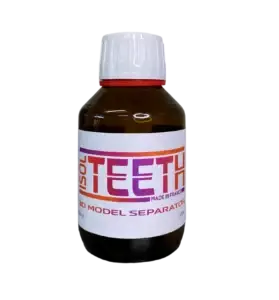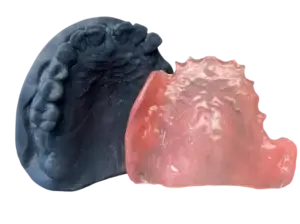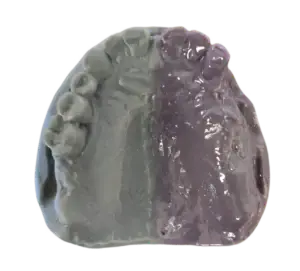
Dental Separator Material for 3D Printed Models
Introducing our avant-garde dental separator material that enables you to perfectly isolate your 3D printed resin models for casting false gums of RPD or complete denture. Our separator, called “ISOL TEETH™”, is available in four colors: transparent, blue, pink, and purple.
Since 2014…10 Years
Benefits:
- Affordable, efficient, and fast
- Suitable for all laboratory materials, including 3D resins, PEEK (to protect visible parts of frames during polymerization of monomer resins), and PLA for orthodontic laboratories and powder technique
- Non-greasy, leaving no residue or staining on models, RPD, or brushes, and easy to clean after application
- Reduces lines in 3D printed models to achieve a smooth full denture
- Quick and easy to apply, becoming the fastest in its category if drying is expedited with an air gun or torch (a few seconds)
- Transportable by air, and its safety declaration sheet contains no danger pictograms.


Separator 3D printed model
3d model separator,
Size: 3.38 oz (100 ml)
Order now and achieve the smoothest results for your 3D printed models.
REF ISOL100E
Dental model separator
MANUAL:
– Turn “ISOL TEETH” several times to mix it well.
– It is recommended to work with solid models.
– Hollow models are deformable when heated and permeable to pressure.
– Ensure proper photopolymerization of the models.
– Test the product by pouring resin into the palate of a tall model to understand the principle.
– Use a cold auto resin (such as Pro Base Cold by IVOCLAR), so do not exceed a water temperature of 50 degrees Celsius.
– Wait for the resin to form a thin surface skin before placing it in the water for polymerization.
– Maximum pressure should be 1.2 bars.
– Wait for the model to cool before removing the polymerized prosthesis.
– Clean the intrados (lower part) under water.
– Clean the brush with water.
Fast usage and enjoyable application, it becomes the fastest in its category if you accelerate drying with an air gun or a torch (a few seconds).
It is recommended to isolate the 3D models twice to achieve a smooth and glossy intrados. It may remain slightly sticky to optimize the accuracy of monomer resins during polymerization and obtain perfectly fitting prostheses.




